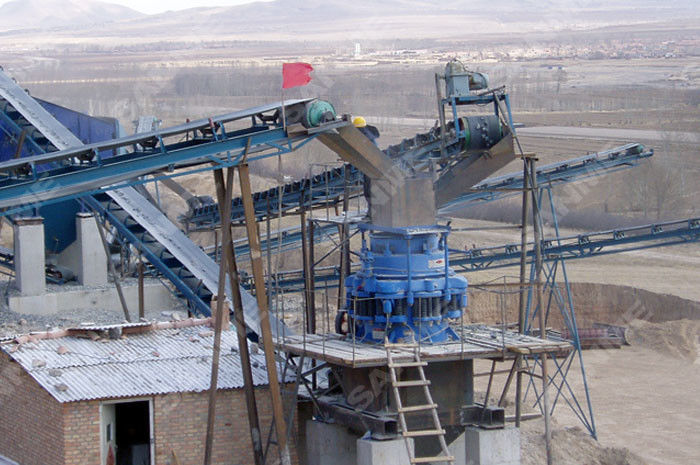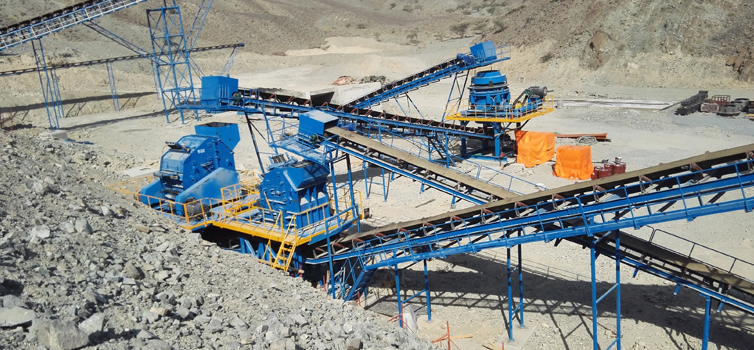
400Kw Metallurgy Feeding 460mm Cone Crusher Machine
2024-9-27
During the use of impact crushers, some common faults may occur due to the influence of various factors. The following are some common faults and their possible causes:
1. Abnormal vibration
The material is too large: the feed size exceeds the design range of the equipment, causing the equipment to vibrate.
Uneven wear of the hammer head: The wear degree of the impact hammer head is different, resulting in uneven force during the crushing process, causing vibration.
Unbalanced rotor: Improper installation or wear of rotor parts leads to uneven weight distribution, causing vibration.
Improper foundation treatment: The foundation treatment is not firm during equipment installation, such as loose anchor bolts, collapse of the casting platform, etc., which can also cause vibration.

2. Bearing overheating
Bearing lack of oil: Too little or too much lubricating oil will cause the bearing to heat up, and lubricating oil needs to be added according to the specified standards.
Bearing damage: The bearing is severely worn or damaged, such as the bearing falling apart, and needs to be replaced in time.
The upper cover is too tight: The screws that fix the bearing are tightened too much, causing the bearing to be unevenly stressed and heated, and the bolt tightness needs to be adjusted.
3. Excessive discharge particle size
Hammer wear: The hammer is severely worn, the crushing effect is weakened, and the discharge particle size is too large. The hammer needs to be adjusted or replaced.
The gap between the hammer and the impact plate is too large: When the gap is too large, the impact force of the material during the crushing process is weakened, and the discharge particle size will also become larger. Generally, the gap needs to be adjusted to 15-20mm.
The feed particle size is too large: The feed particle size exceeds the equipment processing capacity, which will also cause the discharge particle size to be too large.
4. Belt flip
Belt wear: The belt will wear after long-term use, causing the belt to flip. A new V-belt needs to be replaced.
Belt assembly problem: The pulley is not adjusted on the same plane, causing the belt to flip due to uneven force. The pulley position needs to be adjusted.
V-belt quality: The V-belt itself is of poor quality, which is also easy to cause flipping. When replacing, a reliable V-belt needs to be selected.
In summary, the impact crusher may experience common faults such as abnormal vibration, bearing heating, excessive discharge particle size and belt flipping during use. For these faults, corresponding measures need to be taken to investigate and deal with them to ensure the normal operation and production efficiency of the equipment. At the same time, during use, you should also pay attention to the maintenance and care of the equipment to extend the service life of the equipment and reduce the occurrence of failures.